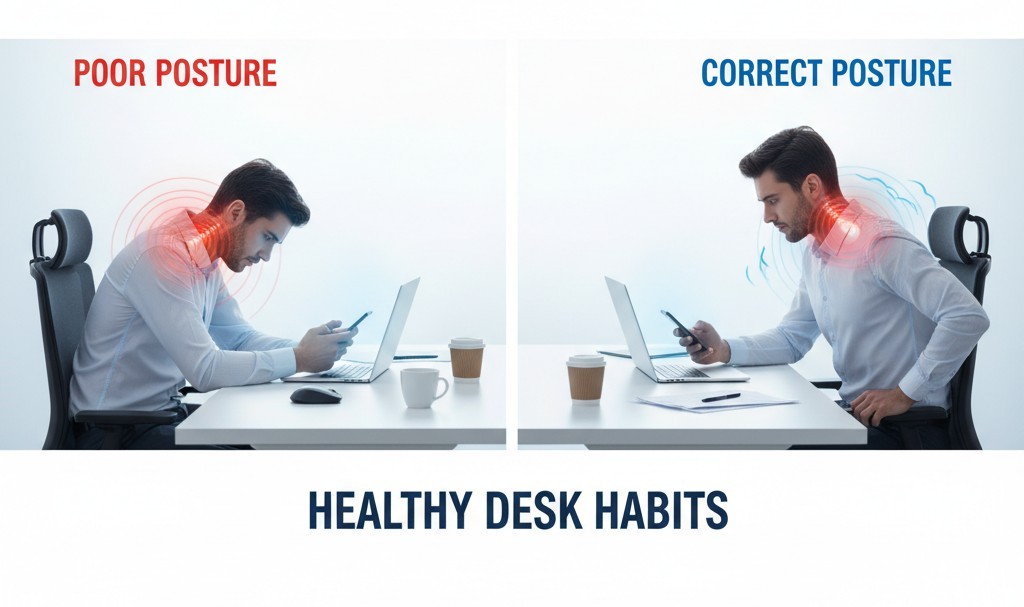
Do you sometimes sit and lean down over the phone or over the laptop to spend a lot of time? Such a posture might appear to be innocuous, yet with time, it may lead to a painful block of technology addiction known as Tech Neck, or even to the so-called Text Neck Syndrome. Tech Neck occurs in situations when your head keeps being bent forward all through as you use digital devices. The normal weight of the adult head is approximately 10-12 pounds, yet, as one leans forward at 45 degrees, the stress on the neck may increase to nearly 50 pounds, or as though the person is carrying a small child on the neck for the whole day. As a result of this continual embarrassment, the muscles get weakness, rigidity and chronic neck pains.
What Causes Tech Neck?
Tech Neck is caused by the underlying causes of bad postures which is extended forward posture of the head- it happens when you lean forward rather than holding your head straight along the backbone. However, the habits are a number of everyday habits that complicate them.

Excessive Screen Time
Constant strain in the muscles on the neck and the shoulder results because of the number of hours one spends staring at phones, tablets, and laptops. The bolder you keep this posture, the greater your spine accumulation of stress.
Poor Posture
Shoulders are slched, upper back is rounded, and a bent neck will result in a set chain reaction on the tension of the upper body. Such bad posture habits impose stress on the muscles of the neck leading to tightness and pain in the neck.
Weak Neck and Core Muscles
In case, your supporting neck, shoulder and core muscles are weak your posture easily goes out of shape. This is further straining the neck and the upper back.
Lack of Movement
The duration of sitting in one position lowers blood flow and flexibility. Lack of normal movement leads to rigidity of muscles, the back becomes inflexible, and in the long run, pain will accumulate.
Improper Ergonomics
- Most offices do not have ergonomic working environments. Low screens, non-adjustable chairs, and uncomfortable desk positions in addition to this facilitate the problem.
Common Symptoms of Tech Neck
You may have Tech Neck when you;
Neck Stiffness or Soreness
Tightness of the Shoulders or Upper Back.
Note; many headaches, particularly at the skull base.
Forward posture of the head is visible.
Drowsiness or pain of the hands or arms.
After extended shoulder periods Sessions Sessions that produce fatigue or discomfort.
Such symptoms usually start out being mild forms of stiffness but may turn into
Common Symptoms of Tech Neck
- You may have Tech Neck when you;
- Neck Stiffness or Soreness
- Tightness of the Shoulders or Upper Back.
- Note; many headaches, particularly at the skull base.
- Forward posture of the head is visible.
- Drowsiness or pain of the hands or arms.
- After extended shoulder periods Sessions Sessions that produce fatigue or discomfort.
Such symptoms usually start out being mild forms of stiffness but may turn intochronical pain when unaddressed.
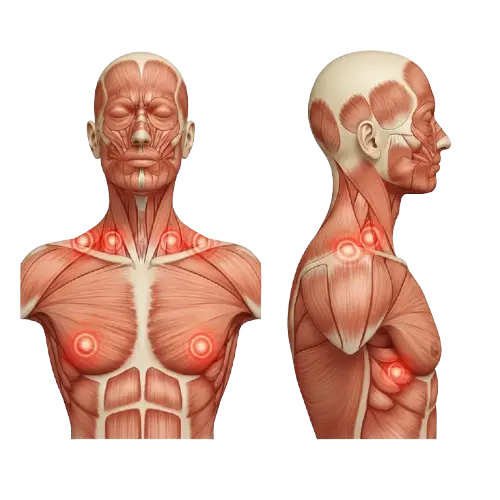
The Science Behind Tech Neck
Whenever the head tips forward, then the neck must exert the additional efforts to hold it up. Tilting a spine by small degrees of attack doubles the pressure of the spine. In the long run, it results in muscle strain, alterations of the form of the spine and even irritations in nerves. Untreated Chronic Tech Neck hasThe Potential To Result in:
- 1. Muscle Fatigue and Spasms
- 2. Disc compression Joint stiffness
- 3. Premature damage of the cervical spine.
- Tech Neck Posture Fixes Adjust Your Screen Height Get your screen at eye level hereby ensuring that you do not have to strain your neck downwards. Install laptop stand or adjustable monitor arm to assist in orienting your eyes to the high region of your screen (top third).
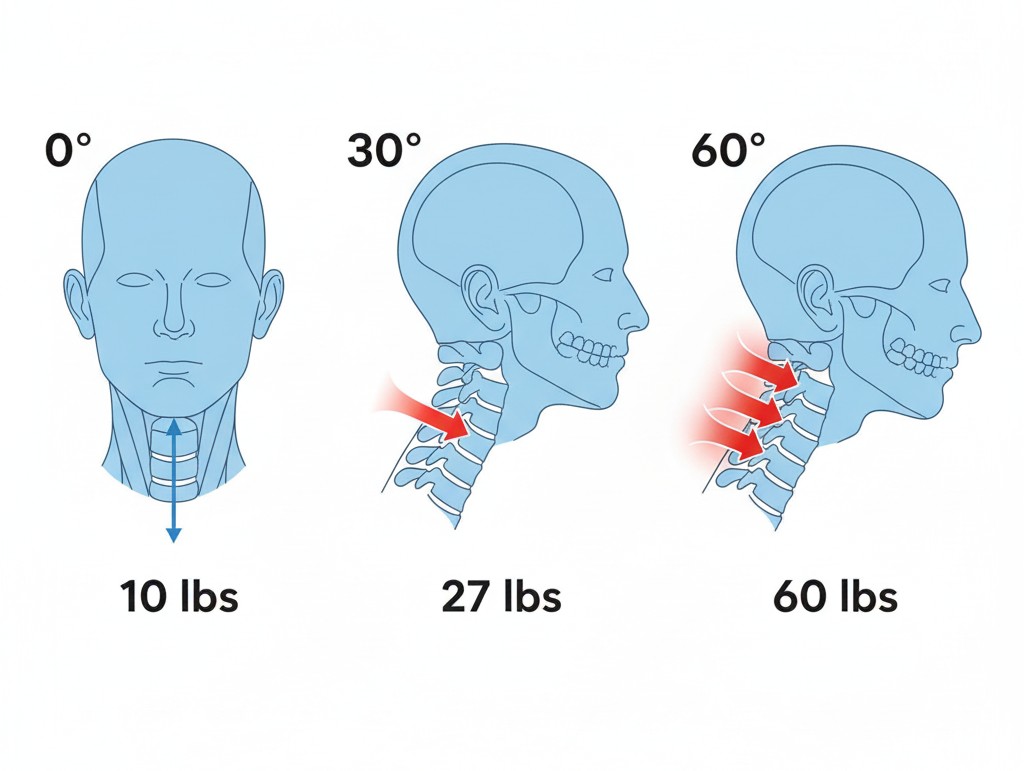
Have Good Proper Sitting Posture
Lorem ipsum dolor sit amet consectetur adipiscing elit. Ut elit tellus luctus nec ullamcorper mattis pulvinar dapibus leo.
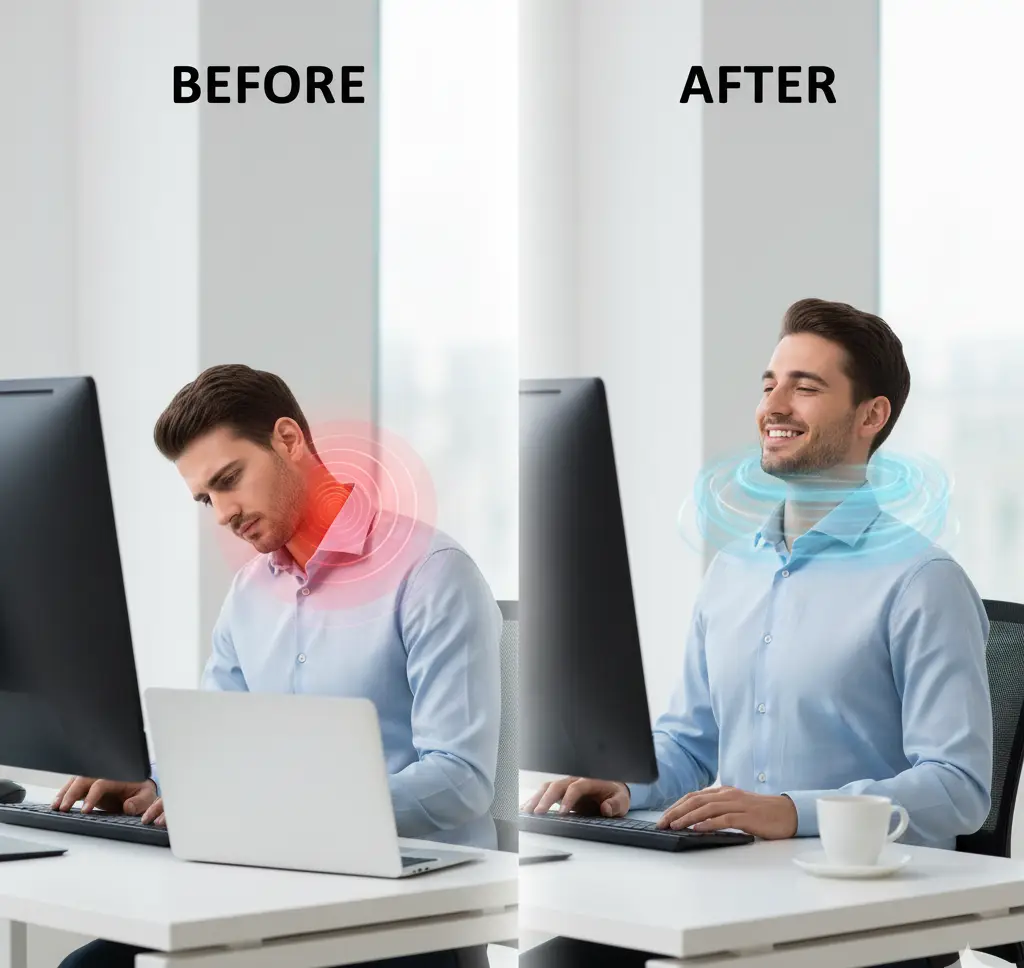
Take Frequent Breaks
Use same 20-20-20 rule with every 20 minutes having a 20 seconds rest and look at something at 20 feet. This massages your eyes, as well as resettling your position.
Do Nep Peck and Shoulder Exercises.
- Chin Tuck (Neck Retraction) Sit or Stand Tall.
- You should simply tuck your chin towards your neck maintaining a straight head.
- Wait to count to five after which time you relax.
- Repeat 10 times.
- The exercise promotes the strengthening of the deep neck muscles as well as decreasing forward-head position.
- Shoulder Blade Squeeze Sit or Stand Tall.
- Move the Shoulder Blades Toward Each Other and Down.
- Breathe in and out between five and ten seconds.
- Repeat ten times. Improves the upper back area and should alignment.
- Thoracic Extension Lie on a foam roller lying on your back mid-back.
- Bend backwards over it Stretching your Spine With the Upper Part.
- Repeat 10-15 Times. The Training Enhances Flexibility and the Movement of The Spine. Upper Trapezius Stretch Now lean your head on one of the sides.
- Apply the hand pressure lightly with your hand to get a deeper stretch.
- Hold For 20-30 Seconds onT each Side.
- Reduces The Strain in the Neck and Shoulders.

Create a Probable Workplace.
- Monitor will always be facing you.
- Sit on a chair which upholds your spine and neck.
- Your elbows and wrists should be held in close position.
- A wireless mouse or keyboard is recommended where overreaching is eminent.
- Correct ergonomics will minimize fatigue of muscles and eliminate repetitive pains.

Be Active and Experts at Strength
Added to it are stretching and strengthening exercises, on your neck, back and core. Yoga, Pilates, and other light resistance training activities will restore balance and posture. Daily stretching cultivating as small as ten minutes can considerably relieve students of neck tension
How to Deal with stress and sleep properly.
Muscles tend to contract up involuntarily when one is stressed. Also, practice deep breathing or Mindfulness in Order to Remain Relaxed.
In Addition, you Should have your Feet Elevated on a Supportive Pillow and Preferably lie on your Back or side. Stolying Down on your Stomach will Bend the Neck in a Strange Manner.
When to See a Professional
It is Necessary to Consult a Doctor in Case the Neck Pain lasts longer than Weeks and even Becomes more intense. Talk to your Physiotherapist, Chiropractor, or Orthopaedic Specialist in Case You Have:
- Limp numbness or tingling of hands or arms.
- Problem with turning or raising up your head.
- High arm or chest pain.
- The early treatment will prevent the onset of chronic ailments such as disc degeneration or the compression of the nerves.
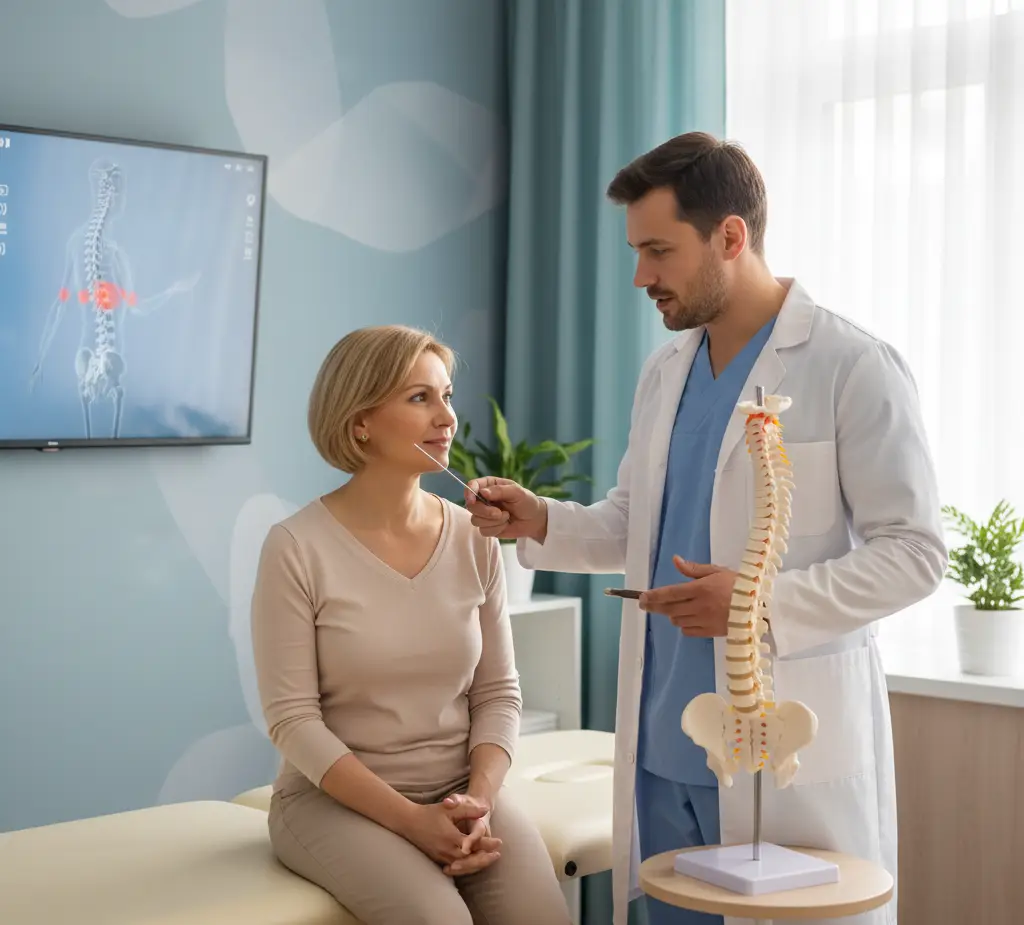
Prevention Tips
- Photograph your devices before your eyes.
- Do not sit in one position without any movement.
- Enhance the muscles of the neck, shoulders and core.
- Take a break every several hours of work.
- Restrict the unwarranted display.
- Promote proper posture habits among children at an early age.
- Minor changes that one can make during the day will greatly help in ensuring that they maintain a healthy spine.
Conclusion
One of the most widespread contemporary health issues is Tech Neck, but the positive side is that this illness can be fully avoided. You will be able to support healthy and a pain-free neck by providing yourself with proper posture, frequent rests, and easy exercises in addition.
